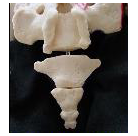How to “describe” TAILBONE PAIN (coccyx pain) |
How to describe TAILBONE PAIN (coccyx pain)by Dr. Foye… www.TailboneDoctor.com IntroductionHow do you best describe your sore tailbone (coccyx) to your doctor? Being able to describe your symptoms to your physician can help the doctor to understand what is causing your tailbone pain and how to treat it. In my medical career as a physician who has treated at least hundreds of patients with tailbone pain, I commonly see patients who are unsure how to describe their tailbone pains. The steps below will ask you some questions that should help you to organize your descriptions of your tailbone symptoms. InstructionsDifficulty: Moderate StepsStep OneLocation: First, your doctor will want to know where your pain is coming from. Notice which location seems most painful. If you can point with one finger to the most painful area, that will help the doctor to know whether the pain seems to be coming from the tailbone (coccyx) rather than coming from some other nearby locations. Step TwoSeverity: Try to rate the severity of your tailbone pain on a scale of zero to 10, with zero being no pain at all and 10 being the worst pain imaginable. Is the tailbone pain excruciating, or is it just a mild annoyance? Step ThreeDuration: How long have you been experiencing the tailbone pain? When did the tailbone pain first start? Be as specific as you can. Step FourOnset of pain: Did the tailbone pain start suddenly or did it start more gradually? What do you think might have caused it? Step FivePain descriptors: What phrases would best describe the type of tailbone symptoms that you are having? Would you call it pain, soreness, discomfort, burning, stabbing, or aching? Step SixIs the tailbone pain constant, or does it come and go? Step SevenExacerbating factors: What makes the tailbone pain worse? Is it worse with sitting? After you are sitting for a while, does the coccyx pain suddenly get worse when you first stand up? Is sitting worse on some chairs or surfaces than on others? Step EightRelieving factors: Notice what makes the tailbone pain feel less. Does it feel better with over-the-counter pain medications? Does it feel better when you avoid certain activities? Step NineSee your physician: Have your doctor evaluate your symptoms and perform a careful physical examination that should specifically include checking to see if the pain is really coming from the tailbone are not. The doctor may also want to order some tests. Step TenIf your doctor is not experienced at evaluating tailbone pain or is not aware of non-surgical treatments to offer you, seek a second opinion from a physician with more expertise in this area. Overall Tips & Warnings
|
